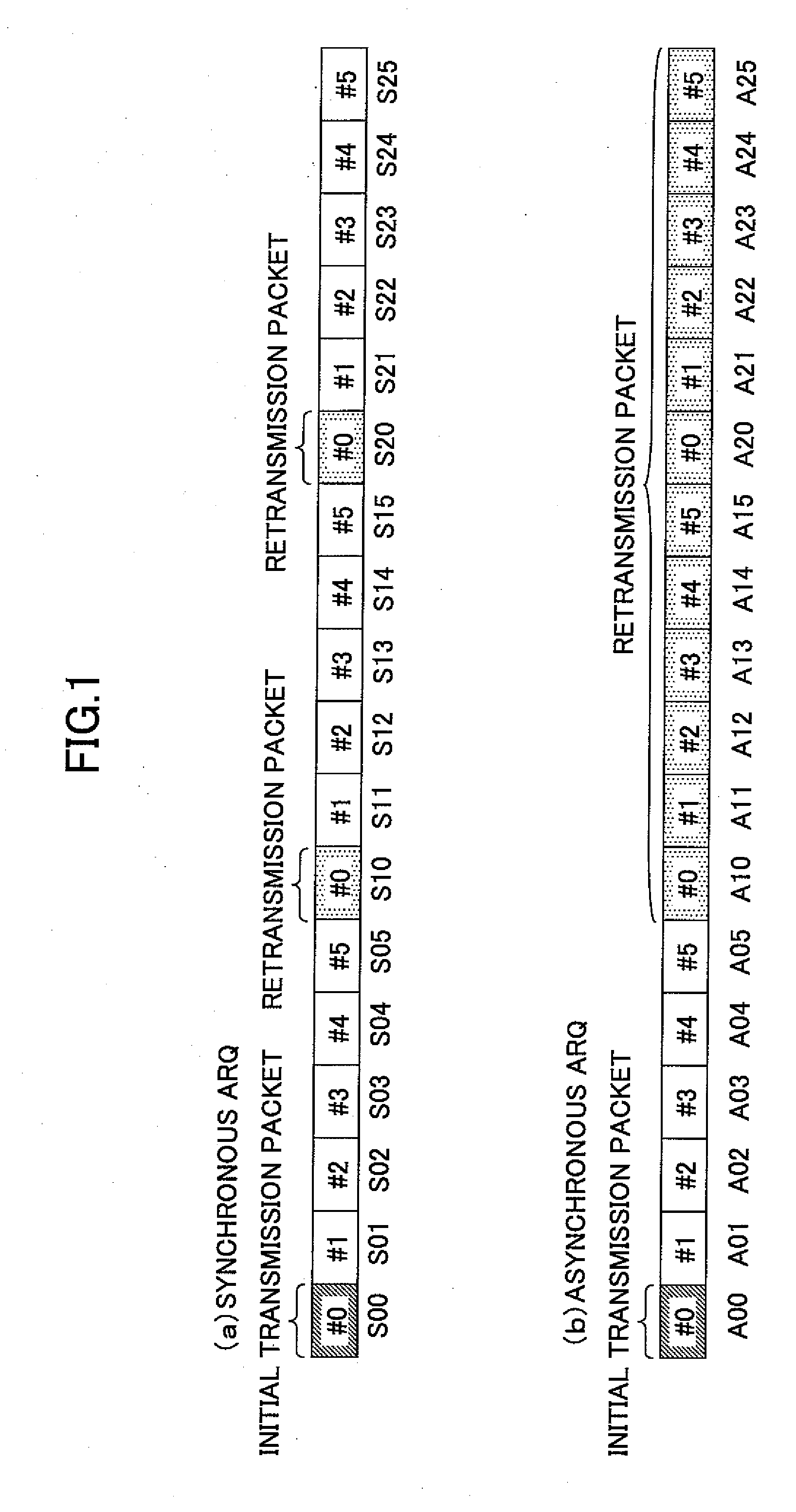Mobile station and a base station
a mobile station and base station technology, applied in the field of mobile stations and base stations, can solve the problems of poor and achieve the effect of improving the reception quality of retransmission packets
- Summary
- Abstract
- Description
- Claims
- Application Information
AI Technical Summary
Benefits of technology
Problems solved by technology
Method used
Image
Examples
first embodiment
[0101]FIG. 2 shows a sequence diagram of a retransmission control scheme in accordance with a first embodiment of the present invention. In the first embodiment, a frequency allocation position for a retransmission packet is controlled.
[0102]As shown in FIG. 2, a mobile station transmits a transmission packet (also referred to as an initial transmission packet) with a predetermined format upon transmitting data to a base station (S101). For example, assuming that a system bandwidth of 5 MHz is divided into four bandwidths, the mobile station transmits the transmission packet with a first bandwidth of 1.25 MHz. The base station receives the transmission packet and detects an error in the packet. If the base station successfully receives the transmission packet, the base station transmits a confirmation signal (ACK: Acknowledgement) to the mobile station. Otherwise, the base station transmits a retransmission request signal (NACK: Negative Acknowledgement) to the mobile station (S103)...
second embodiment
[0108]FIG. 4 shows a sequence diagram of a retransmission control scheme in accordance with a second embodiment of the present invention. In the second embodiment, a frequency bandwidth for a retransmission packet is controlled.
[0109]As is the case with the first embodiment, a mobile station transmits a transmission packet with a predetermined format upon transmitting data to a base station (S201). For example, assuming that a system bandwidth is equal to 5 MHz, the mobile station transmits the transmission packet with a frequency bandwidth of 2.5 MHz. The base station receives the transmission packet and detects an error in the packet. If the base station fails to receive the transmission packet successfully, the base station transmits a retransmission request signal (NACK) to the mobile station (S203).
[0110]When the mobile station receives the retransmission request signal (NACK), the mobile station transmits a retransmission packet at a predetermined cycle (S205). In the second e...
third embodiment
[0114]FIG. 5 shows a sequence diagram of a retransmission control scheme in accordance with a third embodiment of the present invention. In the third embodiment, transmission power for a retransmission packet is controlled.
[0115]As is the case with the first embodiment, a mobile station transmits a transmission packet with a predetermined format upon transmitting data to a base station (S301). For example, the mobile station transmits the transmission packet with normal transmission power. The base station receives the transmission packet and detects an error in the packet. If the base station fails to receive the transmission packet successfully, the base station transmits a retransmission request signal (NACK) to the mobile station (S303).
[0116]When the mobile station receives the retransmission request signal (NACK), the mobile station transmits a retransmission packet at a predetermined cycle (S305). In the third embodiment, the mobile station transmits the retransmission packet...
PUM
 Login to View More
Login to View More Abstract
Description
Claims
Application Information
 Login to View More
Login to View More - R&D
- Intellectual Property
- Life Sciences
- Materials
- Tech Scout
- Unparalleled Data Quality
- Higher Quality Content
- 60% Fewer Hallucinations
Browse by: Latest US Patents, China's latest patents, Technical Efficacy Thesaurus, Application Domain, Technology Topic, Popular Technical Reports.
© 2025 PatSnap. All rights reserved.Legal|Privacy policy|Modern Slavery Act Transparency Statement|Sitemap|About US| Contact US: help@patsnap.com



